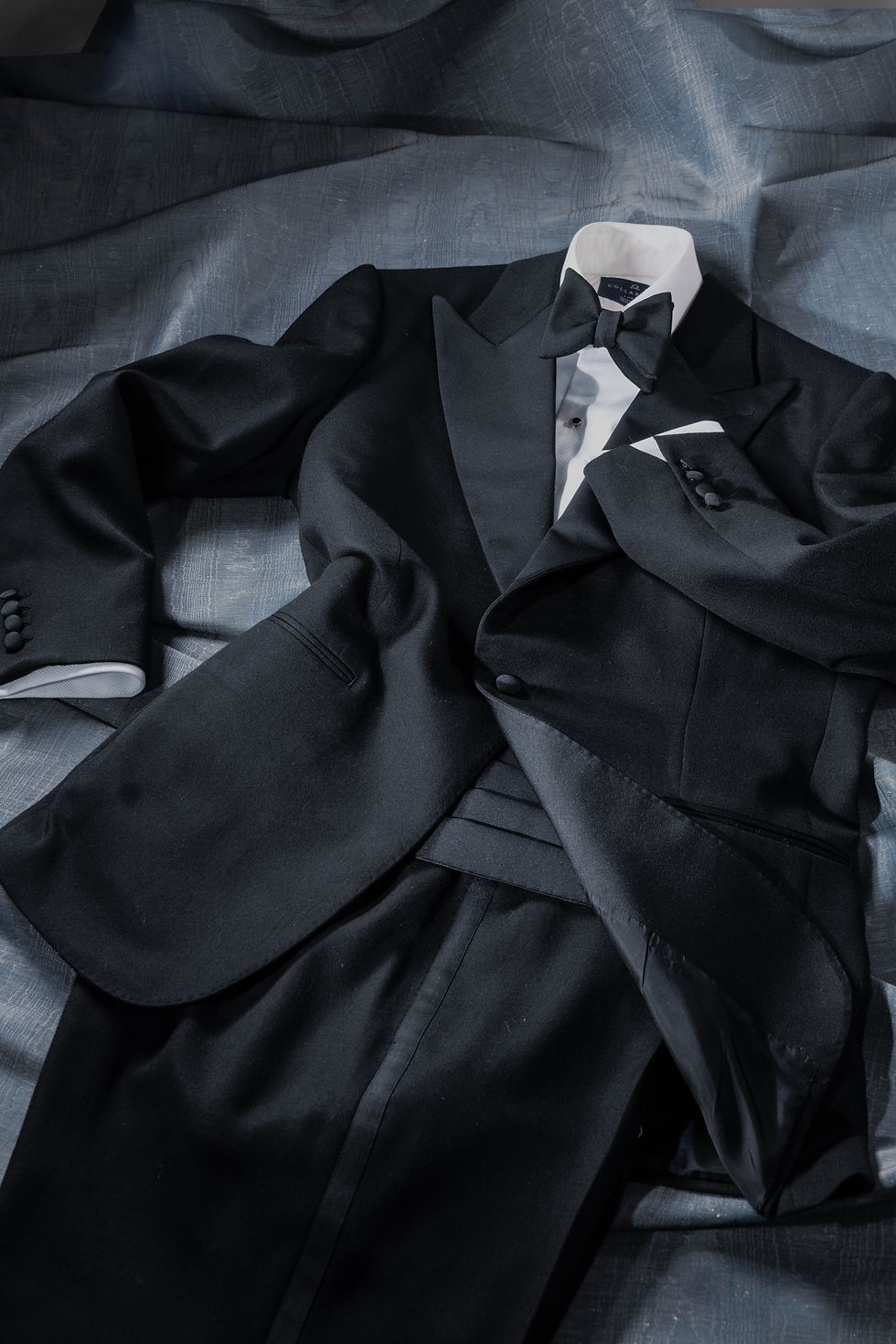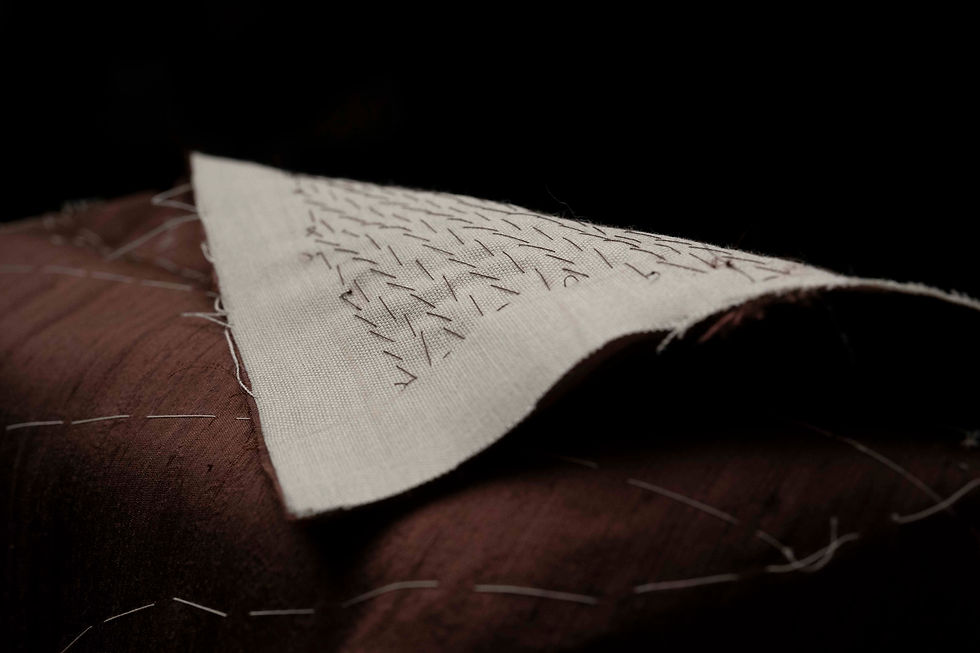
A couple of years ago, I wrote a piece called "How Sustainable is Bespoke Tailoring?" here at The Suitstainable Man.
The intention for setting pen to paper on this niche topic, which some would deem as a mere intellectual curiosity, was to provide some form of empirical evidence, factual analysis, or at least, pure insight into one of the almost universally taken-as-granted 'truths' within the sartorial and luxury fashion world — that bespoke tailoring is more 'sustainable' because its long-lasting product cycle, crowning itself as the slowest of all slow fashion.
Now, many moons later, I reflect upon this article and whatever impact it has since made. While it was certainly a conversation-starter piece, applying a partial version of an internationally standardized scientific approach that is none other than the Life Cycle Assessment (LCA) method to test out a widely-assumed hypothesis, it was by no means perfect.
For one, the investigation was not representative enough of the many processes and materials that a bespoke suit commission entails. It also largely focused on the carbon emission aspect of environmental sustainability over other equally pressing considerations. But such is the nature of bespoke tailoring, with the immense level of complexity and variation that goes into the making of each individual piece; with considerations such as the number of fittings or types of trimmings used differ largely from one project to the other. Just to name a few.
To further complicate the situation, perhaps, there were arguably no adequate median figures that manifest in the form of secondary data that could be used for conducting a serious study at the time. Adding to the fact was also an ever-increasing worry about the impact of well-intended and scoped fashion and textile-related research studies used rather tendentiously. Not sufficient enough is the write-up to merely provide a basis for discussion in today's landscape, I feel, it needs to be more.
What I did enjoy yearningly from the piece, to say the least, was the inclusion of the social dimension of sustainability as a consideration. It is still an area that is frequently overlooked, not phrased in the right manner, or quite simply not properly understood by most to this day. There are methods for looking into the impact in this field as well, namely the Social Life Cycle Assessment (SLCA); yet, then again, the article wasn't in the right place to also aptly include this pillar, considering the range of parameters we could be throwing into the equation.
Hence, when a recent conversation with an industry friend brought us to a crossroads of hypothesizing whether owning or renting occasionwear is more sustainable, I knew it was time to do a round two.

Before we jump straight away into the analysis, let's first set up the scope and boundary of concern of this series. Because it is one matter to compare the impact of the same type of attire made with the same materials, only differentiating in the method of ownership, in a true A/B test style; versus comparing all forms of occasionwear.
Factors such as the possibility of garment alteration between wears are highly personal and come down to individual needs, not to mention it adds too many variables into the equation. For example, is the individual someone who has frequent weight fluctuations that require garment alterations every other year? Alternatively, as an occasionwear rental service, does it offer minor adjustments, such as sleeve length change, for each individual client? To put it simply, this is, perhaps, what an LCA looking at this specific element would include, but not for this piece.
What is more pivotal to consider is what type of occasionwear we are addressing. First and foremost, the material determines the method of cleaning required as well as the frequency of maintenance needed. Another consideration is how encompassing should this 'occasionwear' be. Would it only include the apparel itself, without the footwear included? Conversely, would it be a full package that factors in all the accessories, including jewelry, pocket squares, boutonnieres, etc?

It is easy to assume that the most impactful type would be women's polyester dress, quite simply because it is the most abundant form of occasionwear by number and mass. To this, two researchers from Lund University in Sweden, have already conducted research on how environmentally sustainable it is to buy versus rent this type of garment, using data on user behavior that were predominantly gathered from a Swedish dress rental company.
Of course, there isn't a clear-cut answer, and neither should we be expecting one. After all, the level of impact is largely dictated by the number of wears and the duration of ownership. Considerations such as whether the person is purchasing or renting for 'use' purposes or for 'enjoyment' reasons also play an important role.
On one hand, they concluded that in the case of one average use of a formal dress, the highest impact is that of a purchased dress with low (1) total wear occasions while the lowest impact goes to that of a purchased dress with high (11) total wear occasions. All the rental scenarios with varying amounts of total use (2, 11, and 20) are actually sandwiched in between. That said, this perspective is rather limited on its own and does not factor in the time duration quite holistically.
When looking at a four-year timespan of an audience who use the dress for 'enjoyment' reasons, those who purchase and wear it seldomly (1.5 wear per year on average) have the highest impact, while those who are fully committed to a rental system — meaning all their dresses are rented — have the lowest impact.
As for those who interact with the dress for 'use' purposes (4 wear per year on average), the picture is undeniably more complex and divisive. As briefly mentioned earlier, even within the environmental dimension of sustainability, there are more impact categories than just the carbon emissions-concerning global warming potential (GWP). These, for instance, include freshwater ecotoxicity (FETP) and human carcinogenic toxicity (HTPc).
In this scenario, despite the ownership model having the highest impact when it comes to GWP, those who are half renting and half purchasing are the worst in FETP and those who are fully renting are the worst in HTPc. On the flip side, those who purchase is the lowest contributor in terms of HTPc; whilst those who rent 1/3 of the time is the lowest regarding FETP, and those who rent fully is the least in GWP.
Now, the question is whether this study has any relevance to our usual bespoke tailoring or, at least, the classic menswear-wearing crowd.
The first and foremost difference would be that of material. When it comes to LCA, material is almost certainly the most important variable. Varying cloth properties demand varying processing and cleaning techniques, leading to varying types and degrees of environmental and social impacts.
Whereas the mass market women's occasionwear attire would most likely be constructed out of polyester, classic menswear occasionwear is undeniably more diverse. In terms of black tie, the outer shell fabric for the jacket alone can either be made out of wool barathea, cotton velvet, silk dupion, and many other materials. In the same vein, this concern can also apply to shirtings. Cotton is certainly the go-to option, though silk satin is increasingly popular when paired with velvet smoking jackets as well.
We could go further into what one could wear for black tie, though this is a topic that has already been meticulously covered in the book, "Modern Black Tie: A Guide" by our collaborator La Bowtique. (On a side note, you can also find our handmade Silk Dupion Jackets and Plexippus Cape in the book!)

The second consideration is the construction differences. The production process for a simple polyester dress and a black tie ensemble cannot be more polar opposite. For instance, whether the garment is sewn together by hand or by machine plays a role in determining the total amount of electricity used. This can subsequently translate into a considerable difference in global warming potential, depending on where the product is made. (More technically speaking, how carbon-intensive the local electricity grid is.)
Likewise, when it comes to procedural complexity, there is much more that goes into the making of tailoring. It should, by now, be common knowledge that a well-tailored jacket, though more costly, should be fully-canvassed or at least half-canvassed, using horsehair or wool canvas, depending on the climate. This allows the garment to 'breathe', thus contributing to its longevity.
This is, nevertheless, not the case for most tailored jackets in the market, with the mid-to-low tier brands predominantly using fusing instead and hence substantially depreciating the garments' repair potential.
On that note, assuming a sizeable population rents their black tie ensemble due to two main reasons — 1) infrequent use/ entry cost for owning one is high, or 2) want to wear something different each time; we could almost in theory make the assumption that most rental black tie ensembles are fused, in order to be economically-accessible enough to cater to most users.

Factoring all these considerations, then, the most realistic and applicable study is arguably to compare the impact of a personally-owned bespoke, fully-canvassed wool barathea tuxedo to a rented, fused tuxedo made out of a similar fabric. The style of the ensemble would be that of a single-breasted peak lapel jacket with satin-facing, alongside a pair of fabric-matching trousers.
To further narrow down our focus to the garment and the ownership models themselves, We will be excluding add-ons such as garment bags and hangers, as the materials involved in making those vary considerably from one offering to the other as well. This way, we can better examine the post-production impact hotspots, such as dry-cleaning.
Additionally, in order to obtain a more holistic picture, we will also compare their respective impact over a long time span. Tailoring, despite having a high initial production cost requirement, is meant to last long, unlike fast fashion. We will elaborate further on the specifics as this series goes on.
That's it for now! As this series would require a prolonged period of data collection, analysis, and assessment, it will be updated infrequently. Subscribe to our mailing list to receive first-hand updates on this series.
Further Reading:
Bates-Kassatly, V. and Baumann-Pauly, D. (2023) Amplifying Misinformation: The Case of Sustainability Indices in Fashion. Geneva Center for Business and Human Rights. Available at: https://gcbhr.org/backoffice/resources/amplifying-misinformation.pdf (Accessed: 2023).
Johnson, E. and Plepys, A. (2021) ‘Product-service systems and sustainability: Analysing the environmental impacts of rental clothing’, Sustainability, 13(4), p. 2118. doi:10.3390/su13042118.
Roos, S. et al. (2015) Environmental assessment of Swedish fashion consumption. Five garments – sustainable futures. rep. Mistra Future Fashion.
Sandin, G. et al. (2019) Environmental assessment of Swedish clothing consumption - six garments, sustainable futures. tech. Mistra Future Fashion.
Photography: From top to bottom: Ron Lee, The Suitstainable Man Team, Emma Johnson and Andrius Plepys, Arkhé Collection (x2), and La Bowtique

Comments